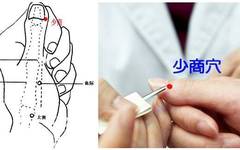1. Baihui (Hundred Meetings): Located at the intersection of the midline of the head and the line connecting the tips of the ears, 7 cun above the posterior hairline.
2. Taiyang (Sun): Located in the depression about 1 cun behind the midpoint between the eyebrow tip and the outer corner of the eye.
3. Yintang (Hall of Impression): Located in the center of the line connecting the inner ends of the eyebrows on the face.
4. Tinggong (Palace of Hearing): Located in the depression behind the jaw joint, in front of the ear.
5. Yuyao (Fish Waist): Located in the middle of the eyebrow, directly below the pupil when the eyes are looking straight ahead.
6. Shuaigu (Leading Valley): Located 1.5 cun above the tip of the ear.
7. Qingming (Clear Brightness): Located 0.1 cun above the inner corner of the eye.
8. Ermen (Ear Gate): Located above the Tinggong point, in front of the notch of the ear, in the depression when the mouth is opened.
9. Suliao (Plain Ridge): Located at the tip of the nose.
10. Jiachao (Cheek Car): Located 1 transverse finger above the angle of the jaw, where the masseter muscle bulges when biting down.
11. Renzhong (Human Center): Located at the junction of the upper third and lower two-thirds of the philtrum.
12. Chengqi (Receiving Tears): Located directly below the pupil, on the lower edge of the eye socket when looking straight ahead.
13. Xiaguan (Lower Gate): Located in the depression formed by the zygomatic arch and the mandible notch.
14. Fengfu (Wind Palace): Located 1 cun above the posterior hairline, in the depression between the two muscles.
15. Fengchi (Wind Pool): Located in the depression between the trapezius and sternocleidomastoid muscles, level with Fengfu.
16. Naohud (Brain Door): Located 2.5 cun above the posterior hairline, at the upper edge of the occipital bone.
17. Shanglianquan (Upper Spring): Located 1 cun below the midline of the jaw, in the depression between the hyoid bone and the mandible.
18. Jingbi (Neck Arm): Located above the clavicle, at the posterior edge of the sternocleidomastoid muscle.
19. Yamen (Mute Gate): Located 0.5 cun above the posterior hairline, between the spinous processes of the first and second cervical vertebrae.
20. Quepen (Deficiency Basin): Located at the midpoint of the lateral neck, in the supraclavicular fossa.
21. Tianrong (Heavenly Container): Located below the angle of the jaw, at the anterior edge of the sternocleidomastoid muscle.
22. Lianquan (Lian Spring): Located on the midline of the neck, above the thyroid cartilage.
23. Piantao (Peach Blossom): Located below the angle of the jaw, at the pulse of the common carotid artery.
24. Tianyou (Heavenly Window): Located below the mastoid process, near the hairline at the posterior edge of the sternocleidomastoid muscle.
25. Tianzhu (Heavenly Pillar): Located 3 cun lateral to the Yamen point.
26. Renying (Human Welcome): Located 1.5 cun lateral to the Adam’s apple, at the anterior edge of the sternocleidomastoid muscle, at the pulse of the common carotid artery.
27. Yifeng (Wind Screen): Located behind the earlobe, in the depression between the mastoid process and the mandible.
28. Futuo (Supporting Turret): Located at the level of the Adam’s apple, at the posterior edge of the sternocleidomastoid muscle.
29. Tiancuang (Heavenly Window): Located on the lateral neck, below the angle of the jaw, behind the Futuo point, at the posterior edge of the sternocleidomastoid muscle.
30. Tianding (Heavenly Ding): Located at the posterior edge of the sternocleidomastoid muscle, 1 cun below the Futuo point.
Trunk
31. Tiantu (Heavenly Trough): Located at the upper edge of the sternum notch.
32. Shanzhong (Chest Center): Located at the midpoint between the two nipples.
33. Qihai (Sea of Qi): Located on the midline of the abdomen, 1.5 cun below the umbilicus.
34. Dabao (Great Package): Located at the midpoint between the Jiquan point and the end of the 11th floating rib.
35. Fuhai (Abdominal Sorrow): Located 3 cun above the Dahuang point, below the xiphoid process.
36. Qimen (Period Gate): Located 6 cun above the umbilicus, 3.5 cun lateral to the Jiquan point.
37. Jiuwai (Pigeon Tail): Located 7 cun above the umbilicus, below the xiphoid process.
38. Shenque (Spirit Gate): Located at the center of the umbilicus.
39. Bulang (Step Corridor): Located 2 cun lateral to the Zhongting point.
40. Jiquan (Extreme Spring): Located in the middle of the armpit when the arm is raised.
41. Riyue (Sun and Moon): Located in the 7th intercostal space directly below the nipple, 1 cun below the Qimen point.
42. Shangwan (Upper Stomach): Located on the midline of the abdomen, 5 cun above the umbilicus.
43. Jingmen (Capital Gate): Located below the head of the 12th rib.
44. Jimai (Urgent Pulse): Located on the inner side of the thigh, 2.5 cun lateral to the pubic symphysis.
45. Liangmen (Beam Gate): Located in the upper abdomen, 4 cun above the umbilicus, 2 cun lateral to the Zhongwan point.
46. Zhangmen (Chapter Gate): Located on the lateral abdomen, at the lower edge of the 11th rib.
47. Kufang (Storehouse): Located in the first intercostal space along the midclavicular line, 4 cun lateral to the Huagai point.
48. Weidao (Maintaining Path): Located 5 cun below the anterior superior iliac spine.
49. Yuanyan (Deep Abyss): Located 3 cun below the armpit, 4 cun lateral to the nipple.
50. Zhongfu (Middle Palace): Located about 1 cun below the Yunmen point, between the 1st and 2nd ribs, 6 cun from the midline of the sternum.
51. Xiawan (Lower Stomach): Located on the midline of the abdomen, 2 cun above the umbilicus.
52. Burong (Not Accepting): Located 1.5 cun lateral to the Pylorus point, 2 cun lateral to the Jiquan point.
53. Daimai (Belt Vessel): Located at the level of the Zhangmen point, in line with the umbilicus.
54. Ruzhong (Middle of the Breast): Located at the center of the nipple.
55. Rugen (Root of the Breast): Located at the 5th intercostal space directly below the nipple.
56. Guanyuan (Gate of Origin): Located 2 cun above the Qugu point, 3 cun below the umbilicus.
57. Zhongji (Middle Extreme): Located 4 cun below the umbilicus.
58. Qugu (Curved Bone): Located 5 cun below the umbilicus, at the upper edge of the pubic symphysis.
59. Zhejin (Zhe Muscle): Located 3-4 cun below the spinous process of the 3rd lumbar vertebra.
60. Mingmen (Gate of Life): Located between the 2nd and 3rd lumbar vertebrae.
61. Jianjing (Shoulder Well): Located at the midpoint between the Dazhui point and the acromion.
62. Changqiang (Long Strong): Located between the tip of the coccyx and the anus.
Limbs
79. Juggu (Giant Bone): Located in the depression between the clavicle and the scapula.
80. Binao (Arm Shoulder): Located on the outer side of the upper arm, slightly anterior to the insertion of the deltoid muscle, connecting the shoulder (glenohumeral joint) and the Quchi point.
81. Chize (Cubital Marsh): Located on the elbow crease, on the lateral side of the biceps tendon.
82. Quze (Curved Marsh): Located on the elbow crease, near the ulnar side of the biceps tendon.
83. Quchi (Pool at the Bend): Located at the midpoint between the elbow crease and the lateral epicondyle of the humerus when the elbow is flexed.
84. Shousanli (Hand Three Miles): Located 2 cun below the Quchi point.
85. Shaohai (Lesser Sea): Located at the ulnar side of the elbow crease, between the ulnar epicondyle and the biceps tendon when the elbow is flexed.
86. Qingling (Green Spirit): Located 3 cun above the Shaohai point.
87. Neiguan (Inner Pass): Located 3 cun above the wrist crease, on the midline of the forearm.
88. Wangu (Wrist Bone): Located on the dorsal side of the hand, in the depression between the 5th metacarpal bone and the hook bone, and the lunate bone.
89. Hegu (Joining Valley): Located at the midpoint between the 1st and 2nd metacarpal bones, slightly towards the index finger.
90. Yangxi (Yang Stream): Located in the depression on the radial side of the wrist joint when the thumb is extended upwards.
91. Zhongzhu (Middle of the Stream): Located between the 4th and 5th metacarpal bones, 1 cun above the metacarpophalangeal joint.
92. Baxie (Eight Evils): Located between the heads of each metacarpal bone when the fist is clenched.
93. Fengshi (Wind Market): Located on the outer side of the thigh, at the point where the middle finger reaches when the arms hang naturally.
94. Yinbao (Yin Package): Located 4 cun above the Ququan point, between the adductor muscle and the sartorius muscle.
95. Yinlian (Yin Connection): Located 2 cun below the Qichong point on the inner side of the thigh.
96. Xuehai (Blood Sea): Located on the inner side of the thigh, 2 cun above the upper edge of the patella.
97. Jimen (Door of the Thigh): Located 6 cun above the Xuehai point on the inner side of the thigh.
98. Chengfu (Supporting the Buttocks): Located at the midpoint of the horizontal crease at the lower edge of the buttocks.
99. Weizhong (Middle of the Hollow): Located at the midpoint of the transverse crease of the popliteal fossa.
100. Zusanli (Three Miles of the Foot): Located 3 cun below the outer knee eye, on the lateral side of the tibia, 1 transverse finger above the anterior tibial muscle.
101. Xiyangguan (Knee Yang Gate): Located above the Yangling point, in the depression above the lateral epicondyle of the femur.
102. Chengshan (Supporting Mountain): Located in the center of the calf, in the depression between the Weizhong point and the heel.
103. Xuanzhong (Suspended Bell): Located 3 cun above the highest point of the lateral malleolus, at the anterior edge of the fibula.
104. Sanyinjiao (Three Yin Intersection): Located 3 cun above the medial malleolus, at the posterior edge of the tibia.
105. Jiexu (Stream of the Foot): Located at the midpoint of the ankle joint on the dorsal side of the foot, between the tendons of the extensor hallucis longus and the extensor digitorum longus.
106. Kunlun (Kunlun): Located in the depression between the lateral malleolus and the Achilles tendon.
107. Taixi (Great Stream): Located in the depression between the medial malleolus and the Achilles tendon.
108. Yongquan (Gushing Spring): Located at the junction of the anterior third and posterior two-thirds of the sole of the foot.
Appendix: Practical Acupuncture Points!
1. Five Effective Points
1. Alleviating Throat Pain: Shaoshang (Lesser Shang) Point
Shaoshang point, belonging to the Taiyin Lung Meridian, is an effective point for stopping cough and treating throat swelling and pain. It is located at the radial side of the tip of the thumb, 0.1 cun from the corner of the nail. Alternatively, it can be found by slightly clenching the palm, raising the thumb, and drawing a line at the radial side of the thumb nail and its base, where they intersect is the point.
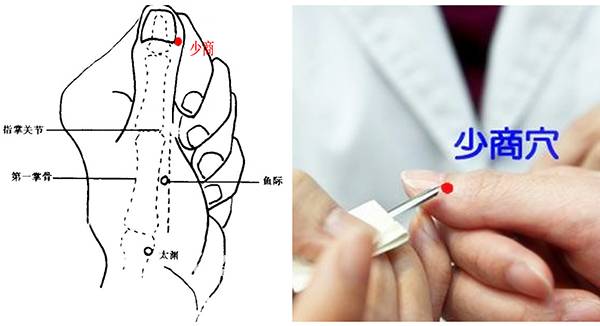
Shaoshang point has the functions of clearing the lungs and benefiting the throat, awakening the spirit. This point is the well point of the Lung Meridian, with a wood element attribute, which has a strong effect of unblocking, regulating, and dispersing, effectively clearing lung heat and expelling evils.
Regularly using the tip of the thumb (or the end of a toothpick) to gently pinch and knead the Shaoshang point until a feeling of soreness is reached, and massaging until it is painless is very effective for preventing and treating chronic pharyngitis and can also prevent colds. Additionally, when hiccuping, pressing the Shaoshang point with the thumb for half a minute can stop the hiccups.
Besides massage, there is another stimulation method for the Shaoshang point, which is bloodletting therapy. Since the lungs dislike heat and prefer coolness, bloodletting at Shaoshang is equivalent to expelling the hot qi and blood from the lungs, restoring a cool environment for the lungs. When acute pharyngitis or tonsillitis occurs, using bloodletting therapy can effectively relieve symptoms.
2. Reducing High Fever: Quchi (Pool at the Bend) Point
The Quchi point is located at the elbow and is a meeting point of the Yangming Meridian of the Hand, which can connect the upper and lower parts of the body, making it a primary point for treating febrile diseases. It has the effects of dispelling wind, relieving the exterior, and clearing heat and detoxifying, effectively resolving wind-heat exterior pathogens and has a strong antipyretic effect.
To locate the point, sit upright and flex the elbow, finding the midpoint between the outer end of the elbow crease and the lateral epicondyle of the humerus. When experiencing fever, cold, cough, or asthma, using a guasha board to scrape the area can quickly relieve symptoms if any sha is expelled.
When massaging, apply vertical pressure with the thumb on the point, while the other four fingers are placed on the opposite side (inner side of the elbow joint) to enhance the stimulation, allowing it to reach the deeper muscle tissues, producing sensations of soreness, numbness, and swelling. Alternate between both sides, pressing for 5-10 minutes each time.
3. Smoking Cessation: Tianmei (Sweet Beauty) Point
The “Tianmei point” is a new point, meaning that quitting smoking allows one to truly taste sweetness. This point is located between the Lung Meridian and the Yangming Large Intestine Meridian (between the Lieque point and the Yangxi point), thus having the effect of clearing the lungs and detoxifying.
To accurately find the Tianmei point, first locate the Lieque point on the arm, where the index finger rests on the arm; then, with the thumb raised, find the Yangxi point in the obvious depression at the wrist; the Tianmei point is in the depression between the Lieque and Yangxi points.
For long-term smokers, using the thumb to press and knead the point will reveal a significant tender spot. If smoking at this time, the taste of the smoke will feel dry and hard to inhale, leading to a sense of aversion to cigarettes.
When cravings occur, massaging this point for 3-5 minutes will significantly increase saliva production, with a slightly sweet taste, helping to quench thirst.
4. Shoulder Pain: 1 Cun Below Yinlingquan (Yin Mound Spring) Point
The Yinlingquan point is the meeting point of the Spleen Meridian and is commonly used for treating spleen and stomach diseases, but there is a special point 1 cun below it that can treat and relieve shoulder pain and discomfort.
Before treatment, locate the Yinlingquan point on the inner side of the lower leg, just below the knee in the depression. The acupuncture point is taken about 1 finger width below this position.

This method uses the X-shaped acupuncture technique, tapping and kneading the Yinlingquan point on the affected side (the shoulder with limited movement) on the opposite side. Press for 10 minutes while trying to increase the range of motion of the shoulder joint.
Using fingers or tools, through 20 minutes of strong stimulation, the range of motion of the arm will improve, and the pulling and soreness in the shoulder will be effectively relieved.
5. Neck Stiffness: Luozhen (Fallen Pillow) Point + Houxi (Back Stream) Point
Maintaining smoothness in the Small Intestine Meridian can prevent neck stiffness. Once it occurs, pressing and kneading the Luozhen point and the Houxi point can help adjust the condition. The Luozhen point is an extraordinary point located between the second and third metacarpal bones on the back of the hand, about 1 transverse finger width outward from the intersection of the two bones.
When pressing, raising the index finger to massage this point will reveal a painful spot (on either the affected or healthy side, which is irregular). Initially, it may be very painful, but while pressing, it is necessary to move and twist the neck; after 5 minutes, the pain will gradually diminish.
For better results, also press and knead the Houxi point (located behind the small finger metacarpal head when the fist is clenched) while moving the neck. In practice, when the pain in both points decreases, the neck will generally return to normal.
2. Five Effective Points for Daily Health Care
1. Cough Relief Point: Lieque (Broken Sequence) Point
Lieque is one of the acupuncture points of the human body, belonging to the Hand Taiyin Lung Meridian, and is also a meeting point of the eight meridians connecting to the Ren Meridian. This point is located on the radial side of the forearm, above the radial styloid process, 1.5 cun above the wrist crease, between the brachioradialis and the tendon of the abductor pollicis longus.
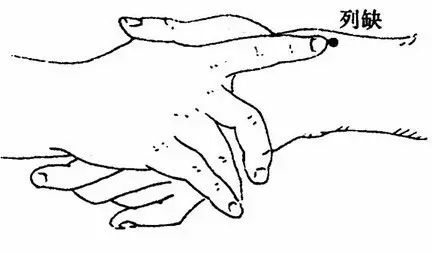
It has the functions of promoting lung function, relieving the exterior, and regulating the Ren Meridian. As a connecting point of the Hand Taiyin Lung Meridian, it can expel wind and relieve the exterior when the evil is on the surface, and when the evil enters the interior, it can also guide the evil out through the exterior meridian.
When coughing, pressing and kneading the Lieque point with the thumb will produce pain; if it is painless, it is very effective for relieving cough.
Additionally, acupuncture, moxibustion, and other methods can be applied to the Lieque point. However, it is important to note that this point is not suitable for scar moxibustion.
2. First Choice for Gallbladder Issues: Yanglingquan (Yang Mound Spring) Point
Yanglingquan is the meeting point of the Foot Shaoyang Meridian, and it is a significant point for gallbladder issues. This point is located on the outer side of the lower leg, just below the head of the fibula.

According to the “Lingshu: Pathogenic Qi and Disease Forms” it states: “For gallbladder diseases, there is a tendency to sigh, bitter mouth, vomiting of old bile, a feeling of heaviness in the heart, fear of being captured, and a feeling of dryness in the throat. For the Foot Shaoyang Meridian, it is also necessary to observe the pulse; if it is three depressions, then apply moxibustion; for cold and heat, use Yanglingquan.” This point has the effect of clearing dampness and removing turbidity, which is very effective for liver and gallbladder damp-heat, internal obstruction of damp-heat, and stagnation of liver qi.
When there is obvious stagnation in the gallbladder meridian or gallbladder disease, tapping and kneading this point will produce a significant reaction; it can also be used for tapping and dredging. Acupuncture or moxibustion can also be performed at this point.
3. First Choice for Diarrhea and Constipation: Tianshu (Heavenly Pivot) Point and Dahong (Great Horizontal) Point
Tianshu point belongs to the Foot Yangming Stomach Meridian and is the meeting point of the Hand Yangming Large Intestine Meridian. It is located on the abdomen, 2 cun lateral to the midline, level with the umbilicus.

Tianshu is the meeting point of the Large Intestine, and it is the source of Yangming qi, primarily responsible for regulating the intestines and stomach, promoting qi movement, and aiding digestion. It is a key point on the abdomen. Tianshu is commonly used in clinical practice, primarily for treating gastrointestinal diseases. It is a crucial junction in the body, and stimulating this point can regulate intestinal function.
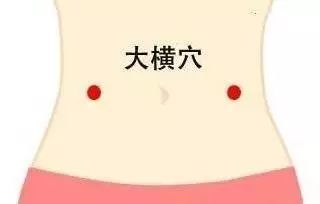
Combining it with the Dahong point yields better results. The Dahong point belongs to the Foot Taiyin Spleen Meridian, located 4 cun above the umbilicus. It has the effects of dispelling dampness, resolving masses, regulating qi, and strengthening the spleen, as well as promoting digestion.
Using the index and middle fingers simultaneously on the Tianshu and Dahong points, applying slight pressure for 5-10 minutes, can also be done with acupuncture or moxibustion.
4. First Choice for Excessive Menstruation and Uterine Bleeding: Yinbai (Hidden White) Point
Yinbai point is the well point of the Foot Taiyin Spleen Meridian, located at the inner side of the tip of the big toe, 0.1 cun from the corner of the nail.
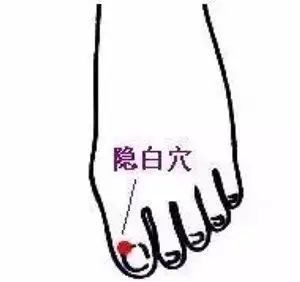
The Yinbai point has the functions of regulating blood and promoting blood flow, supporting the spleen, calming the heart, and warming the yang. This point is the first point of the spleen meridian and is very effective for blood not returning to the meridian and prolonged menstruation.
Using the thumb nail to press on the Yinbai point will often be painful, but it is important to endure. After pressing for 5 minutes, the pain will decrease. Bloodletting with a three-edged needle or moxibustion for 15 minutes can also be effective.
5. First Choice for Neck Stiffness and Vomiting: Hegu (Joining Valley) Point
The Hegu point, also known as the Tiger’s Mouth, is the source point of the Hand Yangming Large Intestine Meridian. To locate the point, place the joint of one thumb on the web between the thumb and index finger of the other hand; the point is located directly below the tip of the thumb.
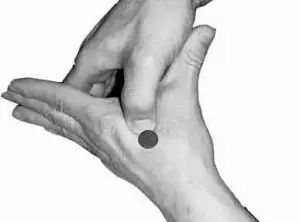
This point is the source point of the Large Intestine Meridian, where the original qi of the Large Intestine is infused. The Large Intestine Meridian connects to the Lung and Stomach, thus regulating gastrointestinal function, harmonizing the stomach, descending qi, alleviating pain, and clearing heat.
When vomiting occurs, pressing and kneading the Hegu point with the thumb will produce a sensation of soreness; pressing for 6-10 minutes is very effective for vomiting. Additionally, acupuncture and moxibustion can also be applied to the Hegu point.
3. Uncommon Effective Points
1. Points for Gallbladder Inflammation Attacks
Extraordinary point – Gallbladder Point, can be found 1-2 cun directly below the Yanglingquan point at the most painful spot.
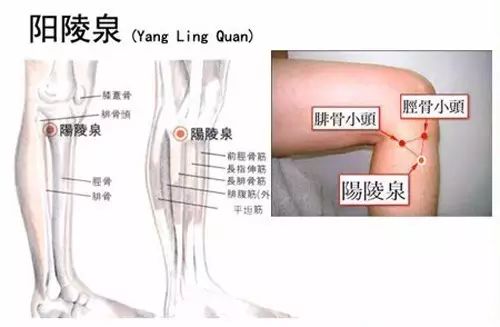
At the most painful spot, tapping and kneading is very effective for acute gallbladder inflammation attacks. For chronic gallbladder inflammation, regularly checking this area and tapping to dredge it can prevent acute attacks. The Gallbladder Point has the effect of promoting bile flow and unblocking the meridians.
2. Points for Knee Joint Pain
1 cun behind the Yanglingquan point, there is a point that is particularly effective for knee joint pain. At the connection between the fibula and the muscle, there is a tendon knot formed due to stagnation, which can be relaxed using pressing and kneading techniques. In severe cases, a doctor can use a “small needle knife” for treatment to relieve the urgent situation.
3. Hemorrhoids Point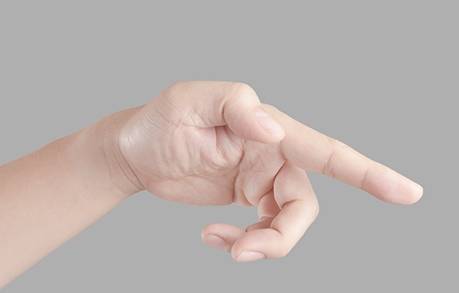
The hemorrhoids point is located on the outer side of the index finger (along the pathway of the Large Intestine Meridian) at the middle segment of the 3rd phalanx.
This point often accompanies stabbing pain; pressing and kneading this area repeatedly over several days can significantly relieve symptoms. Reports indicate that this method can yield immediate results, and some people’s hemorrhoids may retract immediately.
4. Adult Hernia – Shangdadun (Upper Great Dun) Point
There is an extraordinary point near the Dadun point that has a special effect on treating adult hernias, named “Shangdadun Point.” It is located on the big toe, creating a square with the root of the big toe as one side, with the midpoint of the opposite side being the point. Both pricking and acupuncture can be used.
5. Appendicitis Point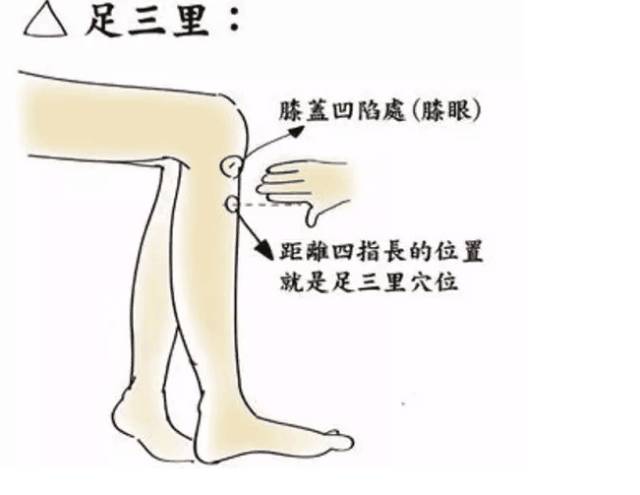
The appendicitis point is located 1.5-2 cun directly below the Zusanli point. Tapping along the anterior crest of the tibia, the most painful spot near the Zusanli point, about 3 finger widths down, is the appendicitis point. If pressing this point becomes tiring, a pen cap can be used instead, pressing twice a day for 5 minutes each time.
Give a thumbs up to promote health together!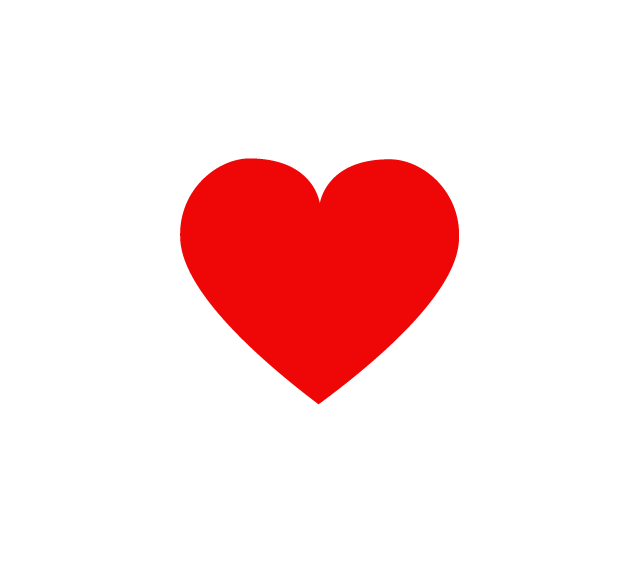 Click below “Business Card” to follow us
Click below “Business Card” to follow us
Light it up so more people can see👇

